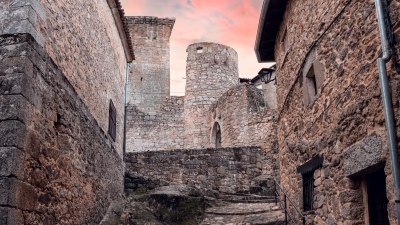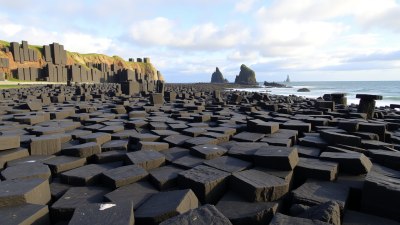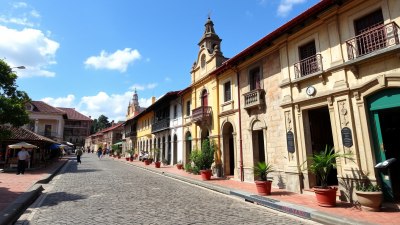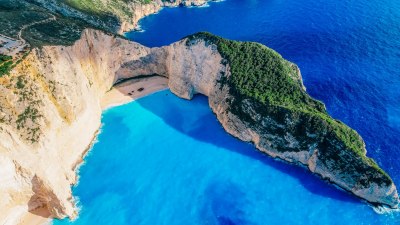Beyond the Gates in Saint-Louis, Senegal
Explore the rich history and culture of Saint-Louis, Senegal, a UNESCO World Heritage site, beyond its famous gates.
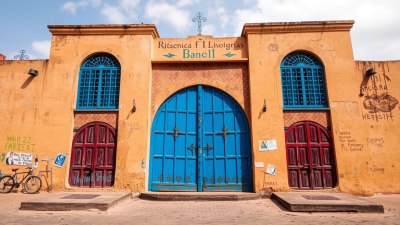
Image created with Flux Schnell
Saint-Louis, Senegal, is a city infused with vibrant history, culture, and art, recognized for its stunning architecture and rich traditions. Once the capital of French West Africa, this city remains a testament to the fusion of African and European influences, particularly showcasing its colonial past through its well-preserved buildings. As we navigate beyond the iconic gates of Saint-Louis, one encounters not only the physical barriers but also the stories and cultural significance that lie within this unique Senegalese city.
The Historical Context
Founded in 1659 by the French, Saint-Louis served as a strategic hub for the transatlantic slave trade and a pivotal point for trade routes connecting Africa with Europe and the Americas. It was during this time that the city flourished, with merchants and traders from various backgrounds converging in this coastal city. The town's layout follows a grid pattern, with cobbled streets that reflect the colonial planning of urban spaces designed to facilitate commerce and transportation. The islands of the Senegal River, where Saint-Louis is located, provided natural advantages for trade, while the surrounding waters contributed to its development as a fishing port.
Cultural Significance of the Gates
The gates of Saint-Louis, serving as the main entrances to the city, are not just physical structures; they symbolize transitions, journeys, and the passage of time. They are reminders of the city’s colonial history and its evolution over centuries. The most notable is the Porte du Frontier, a significant landmark that stands as a memory of the city’s historical boundaries and its role in controlling access during the height of colonialism. While these gates have lost their initial function, they retain an aura of nostalgia and are important for local identity.
Exploring the Island of Saint-Louis
Beyond the gates lies the island of Saint-Louis itself, teeming with life and cultural richness. The streets are lined with vibrant markets, shops, and traditional eateries that showcase the culinary diversity of the region. As one meanders through the narrow lanes, the sounds of traditional Senegalese music resonate from nearby homes, creating an enchanting atmosphere. The island is also home to the famous Faidherbe Bridge, which links the island to the mainland and offers breathtaking views of the Senegal River. Walking along the bridge, visitors can appreciate the unique architecture and find inspiration in the manner in which the river flows, playing a significant role in the existence of the city.
Architectural Wonders
The architecture of Saint-Louis is a blend of Ottoman, French colonial, and indigenous styles, creating a unique aesthetic that invites exploration and admiration. Buildings painted in pastel hues add charm to the streetscapes, with intricate balconies and wrought-iron railings reminiscent of a bygone era. The city is often described as a living museum showcasing 18th and 19th-century colonial architecture with influences from Islamic designs. As visitors walk through, they can appreciate landmarks such as the Governor’s Palace, the Mosque of Saint-Louis, and numerous influential galleries dedicated to local artists. These architectural wonders serve as a backdrop for the cultural events that frequently take place, including art exhibitions and local festivals.
Local Traditions and Festivals
Saint-Louis is renowned for its vibrant cultural festivals, one of the most significant being the Saint-Louis Jazz Festival, attracting musicians and jazz enthusiasts from around the globe. This annual event not only celebrates music but also brings together diverse cultures, promoting unity through art. During the festival, visitors can attend various performances, workshops, and activities that highlight the contributions of local artists. Furthermore, the city is characterized by its rich folk traditions, including unique performances in storytelling and dance that depict Senegalese history, customs, and daily life.
The Importance of the Senegal River
The Senegal River is essential to the livelihoods of the local population and plays a vital role in their cultural practices. It serves as a source of sustenance, supporting fishing communities that have thrived for generations. Many local fishermen can be seen casting their nets into the flowing waters, embodying a rich tradition passed down through families. The river is also significant for agricultural practices along its banks, providing fertile land for crops to flourish. Its role extends beyond economics, contributing to spirituality and social activities within the community, where gatherings often take place by the riverside.
The Slavery Memorial
To fully grasp the historical context of Saint-Louis, one must visit the Slavery Memorial dedicated to the memory of those who suffered through the transatlantic slave trade. The memorial serves as a poignant reminder of the past, honoring the resilience of individuals who were forcibly removed from their lands. It stands in stark contrast to the beauty surrounding it, urging visitors to reflect on the painful chapters of history while celebrating the strength of the human spirit. This memorial is a vital educational resource, providing information about the transatlantic slave trade and its impact on the African continent and beyond.
Supporting Local Artisans
As one ventures beyond the gates, the depth of local craftsmanship becomes apparent. Saint-Louis is home to skilled artisans specializing in a range of traditional handicrafts, including textiles, pottery, woodworking, and jewelry-making. Markets and workshops scattered throughout the city showcase these artisanal works, allowing visitors the opportunity to engage with local artists and learn about their craft. Supporting local artisans not only helps preserve traditional art forms but also sustains the livelihoods of families within the community. Visitors are encouraged to purchase unique pieces to take home, fostering a sense of connection to the culture of Saint-Louis.
The Culinary Landscape
Beyond the historical and cultural landscapes, the culinary scene of Saint-Louis offers a delightful exploration of flavors. Renowned for its seafood, local restaurants serve fresh fish caught daily, prepared with a blend of spices and traditional Senegalese cooking techniques. Dishes such as thieboudienne, a traditional rice and fish dish, and yassa, marinated chicken served with onions and rice, are must-try specialties. Street food stalls offer an experience of vibrant local life, where one can indulge in snacks like accara (bean cakes) or khoff (tapioca). The fusion of flavors reflects the multicultural influences of the city and showcases the unique culinary traditions of Senegal.
Engaging with the Community
Visiting Saint-Louis provides an opportunity to engage with the local community through various initiatives focused on cultural exchange and social responsibility. Many organizations offer programs that allow visitors to participate in community projects, focusing on education, environmental sustainability, and economic development. By engaging in these projects, tourists not only gain a deeper understanding of the local culture but also contribute positively to the community, fostering goodwill and friendship between cultures. Interactions with local families during home visits or community gatherings can lead to unforgettable memories and shared experiences, creating a bridge of understanding.
Environmental Awareness and Conservation
As tourism increases, so does the responsibility to maintain the delicate balance between preserving cultural heritage and promoting sustainable practices. Environmental awareness is becoming essential in Saint-Louis, where initiatives are being implemented to protect natural resources and biodiversity. Programs aimed at coastal and marine conservation highlight the importance of the Senegal River and surrounding ecosystems. By prioritizing environmental sustainability, Saint-Louis sets an example for other cities, showcasing the potential for tourism to be a force for good, ensuring that natural and cultural resources are preserved for future generations. Visitors are encouraged to participate in eco-friendly initiatives, leaving a positive impact during their stay.
Transportation and Accessibility
Transportation within Saint-Louis is relatively straightforward, although navigating the winding streets can be a delightful adventure in itself. Local transportation options include taxis, mototaxis, and bike rentals, allowing visitors to explore the city at their own pace. Many attractions are within walking distance, making it convenient for those wishing to immerse themselves in the atmosphere. Additionally, the proximity to the Dakar region offers a gateway for international visitors, accessible via various modes of transport, including flights into Blaise Diagne International Airport and road transfers to Saint-Louis.
The Essence of Saint-Louis
Beyond the gates of Saint-Louis lies a treasure trove of culture, history, and community that is waiting to be discovered. It serves as not only a window into the past but also a vibrant example of how tradition and modernity can coexist. Exploring this city is an experience that evokes feelings of nostalgia, awe, and inspiration. For those who venture here, whether seeking historical insights or cultural exchange, Saint-Louis offers a unique journey that enriches the soul and fosters appreciation for the diverse tapestry of humanity.
